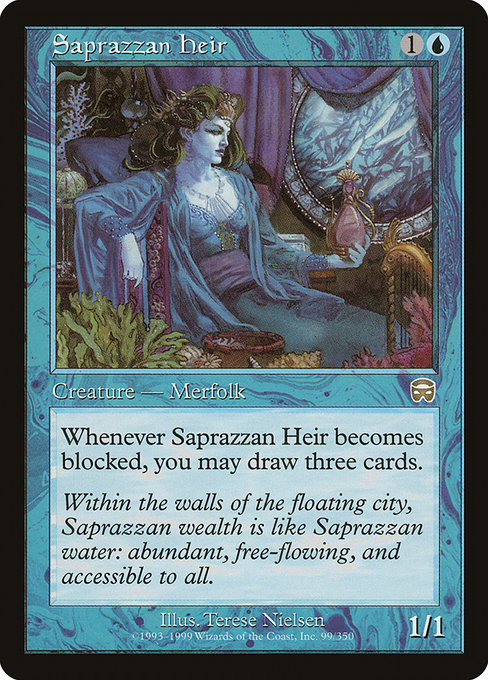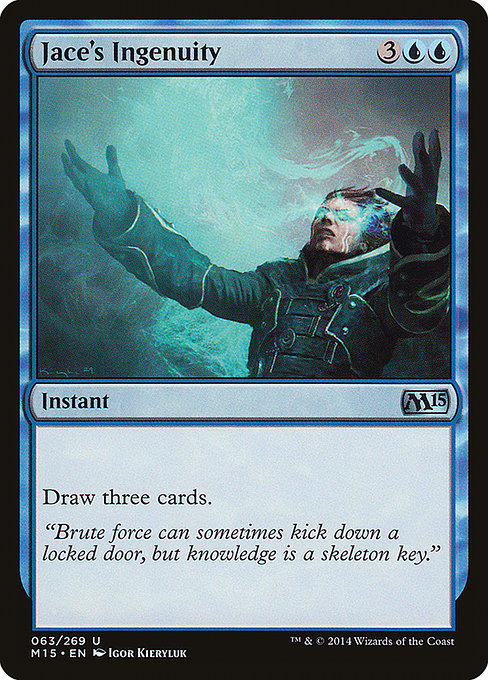With Lurrus interred and Modern in flux, I’ve been experimenting with old friends—which is to say, returning like a Goyf to the graveyard and picking up Life from the Loam. Loam buys back the old standards, but it also has two new toys in Urza’s Saga and Boseiju, Who Endures. So far, Loam has proved too grindy for an Izzet-based, Ravagan-defined Modern metagame, but it’s still been a delight to cast again. I’ll say it: Dredging back and casting Life from the Loam has never felt better.

The better nonbasics Wizards prints, the closer Life from the Loam gets to an outright two-mana, Sorcery-speed Ancestral Recall. “Draw three cards” is, through the accumulation of myth and nostalgia, among the most tantalizing words in Magic history along with “add three mana of any color.” Loam may only draw lands, but lands can do just about everything you want. We have answers (Boseiju, Who Endures, Ghost Quarter, Blast Zone) and threats (Urza’s Saga, Inkmoth Nexus, Mutavault), all while dredging our graveyard full for Tarmogoyf, Tasigur, the Golden Fang, and Murktide Regent. Further testing is required to be tournament-playable, but I’m reminded why I love this game so dearly. Until they print Life from the Loam in Pioneer—which is not going to happen—it’ll have to remain a Modern icon. But there are other crypto-Recalls we can and should explore in other formats.
“Draw three cards” is shorthand for total power, from Ancestral Recall to Arcanis the Omnipotent to Visions of Beyond. In Alpha, that effect ran us one blue mana and a card—this was, of course, a drastic underestimation. Brainstorm was designed as a “fair” Recall, and filled that role well until the advent of fetchlands and the unlocking of its full potential. Entire books’ worth of words have been written about Brainstorm, so I won’t try to dive in, but I will point out that, at the time, it was considered a pretty serious downgrade. That was the era of tutors, rather than Recalls.

As a kitchen table warrior back then, though, I personally stuck a Lure or two onto Saprazzan Heir, not caring that I was trading two awful cards for three more. But it was with Odyssey that Wizards landed on the formula for a fair Recall: Concentrate was an attempt to fix Ancestral Recall. Concentrate set the standard for years to come and was even time shifted into Green with Harmonize. Once the precedent had been set, Wizards began experimenting with various draw three effects, from Compulsive Research to Invasion standout Probe.
We wouldn’t see another single-mana draw three for years, though, although we did get more expensive “Recalls” with drawbacks, like Ideas Unbound. The evolution of Compulsive Research in the Thirst cards—Thirst for Knowledge, Thirst for Discovery, and Thirst for Meaning—were all decent upgrades, although I’m holding out for Thirst for Blood in Black. Black isn’t even the second best Ancestral color, though—that honor goes to Red’s “discard then draw three” theme in cards like Bedlam Reveler, Ogre-Head Helm, and Ox of Agonas. The “impulsive Recall” of Red has a strong pedigree, and is aggressive enough to see significant play.

There are other variants on Concentrate: Standstill, Hatching Plans, Secret Rendezvous, but that delta between one mana and four and Instant versus Sorcery speed really does tell the entire story. Or it did, until 2010 and the printing of Jace’s Ingenuity. Jace’s Ingenuity saw some Standard play a decade ago, but it’s only useful now as a baseline for what a fair actual Ancestral Recall would cost: 3UU. Instant speed tacks on a mana, apparently, and we move from Concentrate to Ingenuity. Since then, we’ve seen further evolution, as in Precognitive Perception, which gives us a very minor upgrade to Ingenuity—pure bonus, but that initial cost still keeps us it from contention. Spoils of Adventure is great value, often costing the same as Jace’s Ingenuity with a shot of life thrown in, and Scour the Laboratory offers a similar deal.
One of the cheapest neo-Recalls in Modern is Visions of Beyond, which requires significant setup but is still worth angling towards. The actual cheapest Ancestral Recall in Modern is, of course, Ancestral Vision, which is more often flipped off Cascade than cast. Like the rest of Time Spiral’s Suspend cards, Vision is a beautifully designed card that trades mana efficiency for temporal inflexibility. Both of these Visions are time-based, with Visions of Beyond implying a game state that has advanced past the early turns, and Ancestral Vision time-gating itself (again, save when Cascaded into).

Then there was Treasure Cruise, which theoretically costs 7U. Wizards has pretty conclusively proven at this point that Delve is too dangerous in all but the most measured doses, and in such spectacular fashion in Khans Block. Personally, I adore Treasure Cruise—the tension in design, the puzzle it presents, the corner case of mana value trickery, its temporary dominance over Pauper, it all evokes power and decadence. It’s also too good, of course; its bans in Legacy, Modern, and Pauper speak to its puissance. But as a thought exercise and as an evolution of Ancestral Recall, it’s brilliant.
Ancestral Recall has a long legacy in Magic, and some of its progeny live up to its hype—Treasure Cruise, Ancestral Vision, Burning Inquiry—but the fail cases are just as interesting. Last year, a pseudo-Recall got a lot of heat when printed in Strixhaven. Secret Rendezvous is, objectively, an awful card: it’s Concentrate with one mana shaved off in exchange for giving your opponent a free Recall themself. I’ve fifteenth-picked a score of them and have cursed it every time.

Like so many bad cards, it’s a way to introduce concepts to players through active learning; the purpose, like Shared Discovery before it, is to trigger a quest for understanding. “Why would I play this?” is a time-honored question in Magic, and to adapt one of the most powerful cards ever printed to trigger that question shows a playful kind of irony. Because Recall is so iconic, Wizards can produce variants on it that are either predictable and overcosted, or at one mana with alternate costs. Because the effect is so simple, so iconic, and so desirable, Wizards can design cards that are elegant little puzzles, rather than blatantly powerful.
Life from the Loam may be an honorary Recall—it’s in the wrong color, it’s Sorcery-speed, it’s closer to a triplicate tutor than a random draw three—but, like Land Tax before it, the raw card advantage it offers cements it as part of the family. I’ve never owned an Ancestral, have never cast it outside of a proxied Cube or on Magic Online, but I’ve cast its successors many times over the decades, from Treasure Cruise in Modern Izzet Delver to Jace’s Ingenuity in M11 Limited to Hatching Plans in Ravnica/Coldsnap Standard.
There’s such security in dropping a card at then end of your opponent’s turn to draw three, whether it costs one mana or five. In a game of options, where outcomes are determined by who sees more useful cards, Recall gives you nothing but options and raw card advantage. To come full circle, this is why Loam is only ascendant as its options increase—the more relevant lands are printed, the more valuable the crypto-Recall becomes.
A lifelong resident of the Carolinas and a graduate of the University of North Carolina, Rob has played Magic since he picked a Darkling Stalker up off the soccer field at summer camp. He works for nonprofits as an educational strategies developer and, in his off-hours, enjoys writing fiction, playing games, and exploring new beers.

